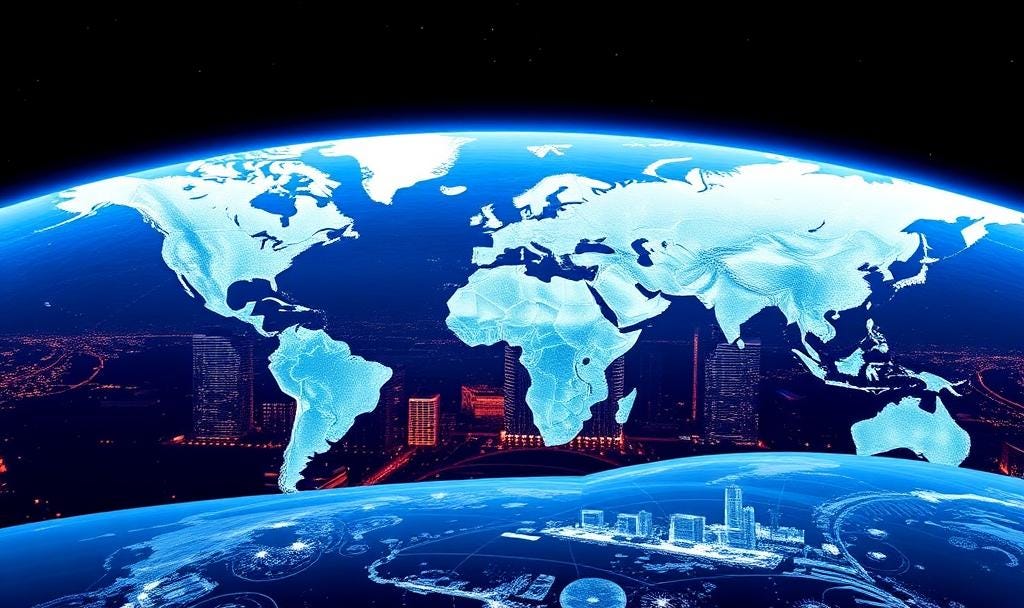Navigating the New Frontier: Globalization and Localization for Entrepreneurs in 2025
In today’s hyper-connected world, entrepreneurship is no longer confined by borders. The rise of digital platforms, mobile technology, and global supply chains has opened unprecedented opportunities for businesses to scale internationally. However, success in this global arena requires a delicate balance of globalization—expanding into new markets—and localization—tailoring offerings to fit local cultures, preferences, and regulations. For entrepreneurs in 2025, mastering this duality is critical to thriving in a dynamic, competitive landscape. Let’s explore how globalization and localization are reshaping entrepreneurial strategies and how you can leverage them to build a resilient, scalable business.
The Global Opportunity: Why Go Borderless?
The case for globalization is compelling. By 2025, the global middle class is projected to exceed 5 billion people, with significant growth in emerging markets like Africa, Southeast Asia, and Latin America. These regions are experiencing rapid urbanization and mobile internet penetration, creating fertile ground for businesses to tap into new customer bases. For instance, mobile commerce in Africa is booming, with platforms like Jumia driving e-commerce adoption across the continent. Meanwhile, Southeast Asia’s digital economy is expected to surpass $360 billion by 2025, fueled by young, tech-savvy consumers.
For entrepreneurs, going global means accessing larger markets, diversifying revenue streams, and reducing reliance on a single economy. Digital tools like Shopify, Amazon, and social commerce platforms (e.g., TikTok Shop) have lowered barriers to entry, enabling even small startups to sell worldwide. Add to this the power of cloud-based logistics and payment systems, and the world truly becomes your marketplace.
But here’s the catch: global expansion isn’t just about translating your website or shipping products overseas. Consumers demand experiences that resonate with their local context—culturally, linguistically, and practically. This is where localization comes in.
Localization: The Art of Thinking Local
Localization goes beyond language translation; it’s about adapting your product, marketing, and operations to align with local cultures, regulations, and consumer behaviors. In 2025, localization is a non-negotiable for entrepreneurs aiming to win trust and loyalty in diverse markets. Here are key areas where localization makes a difference:
Cultural Relevance: What works in one market may flop in another. For example, a bold, individualistic marketing campaign that resonates in the U.S. might feel out of place in collectivist cultures like Japan or Indonesia. Entrepreneurs must research local values, traditions, and humor to craft campaigns that connect authentically. Take McDonald’s: its global brand is consistent, but its menu varies—think Teriyaki Burgers in Japan or McSpicy Paneer in India.
Language and Communication: While English is a global lingua franca, 80% of internet users prefer content in their native language. Tools like AI-powered translation (e.g., DeepL) can help, but human oversight ensures nuance. Beyond translation, consider local slang, idioms, and even emoji usage to make your brand relatable.
Regulatory Compliance: Each market has its own rules. Data privacy laws like GDPR in Europe or CCPA in California require tailored approaches to customer Ascertainable Data Protection Act (ADPA) in South Africa demands localized compliance strategies. Entrepreneurs must navigate import/export regulations, tax structures, and product standards to avoid costly missteps.
Payment and Logistics: Payment preferences vary widely—credit cards dominate in the U.S., but mobile payments like WeChat Pay or UPI are king in China and India. Similarly, reliable last-mile delivery is critical in markets with fragmented infrastructure, like rural Southeast Asia. Partnering with local logistics providers or leveraging platforms like Alibaba’s Cainiao can bridge these gaps.
Supply Chain Resilience: A Global-Local Challenge
Globalization exposes businesses to supply chain vulnerabilities, as seen during the COVID-19 pandemic and recent geopolitical tensions. In 2025, entrepreneurs are rethinking supply chains to balance global efficiency with local resilience. Nearshoring—sourcing from nearby countries—has gained traction as a middle ground, reducing transit times and risks compared to far-flung suppliers. For example, U.S. companies are increasingly turning to Mexico and Canada over China for manufacturing.
Localization also plays a role here. By building relationships with local suppliers or setting up regional hubs, entrepreneurs can mitigate disruptions. Take Shein, the fast-fashion giant: its global reach is powered by a flexible, localized supply chain that adapts to regional demand spikes, ensuring rapid delivery and low costs.
Strategies for Entrepreneurs in 2025
To succeed in this global-local landscape, entrepreneurs can adopt these actionable strategies:
Market Research is King: Use tools like Google Trends, social listening platforms, or local market research firms to understand consumer behavior. For example, analyzing X posts can reveal real-time sentiment about your brand in a new market.
Partner Locally: Collaborate with local influencers, distributors, or co-founders who understand the market. They can navigate cultural nuances and build trust faster than an outsider.
Leverage Technology: AI-driven localization tools (e.g., Lokalise) streamline content adaptation, while cross-border e-commerce platforms like Shopee or Mercado Libre simplify market entry.
Test and Iterate: Start with a pilot—launch in one city or region to test demand before scaling. Use A/B testing for localized marketing campaigns to optimize performance.
Build a Flexible Supply Chain: Diversify suppliers across regions and invest in real-time tracking tools to anticipate disruptions. Platforms like Flexport can help manage global logistics with local precision.
The Future is Global, but Success is Local
In 2025, the most successful entrepreneurs will be those who can think globally while acting locally. The world is more accessible than ever, but accessibility doesn’t guarantee acceptance. By blending the scale of globalization with the specificity of localization, you can create a business that resonates with customers, withstands disruptions, and thrives in diverse markets.
Take inspiration from brands like Netflix, which invests heavily in local content (e.g., K-dramas, Nollywood films) to capture global audiences, or Spotify, which curates playlists tailored to local music tastes. These giants show that the future of entrepreneurship lies in bridging borders without erasing them.
Ready to take your business global? Start small, research deeply, and localize thoughtfully. The world is waiting—but it wants to feel like home.





